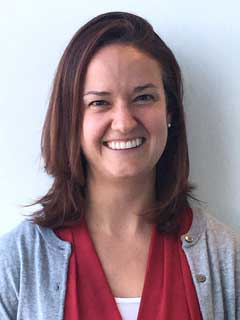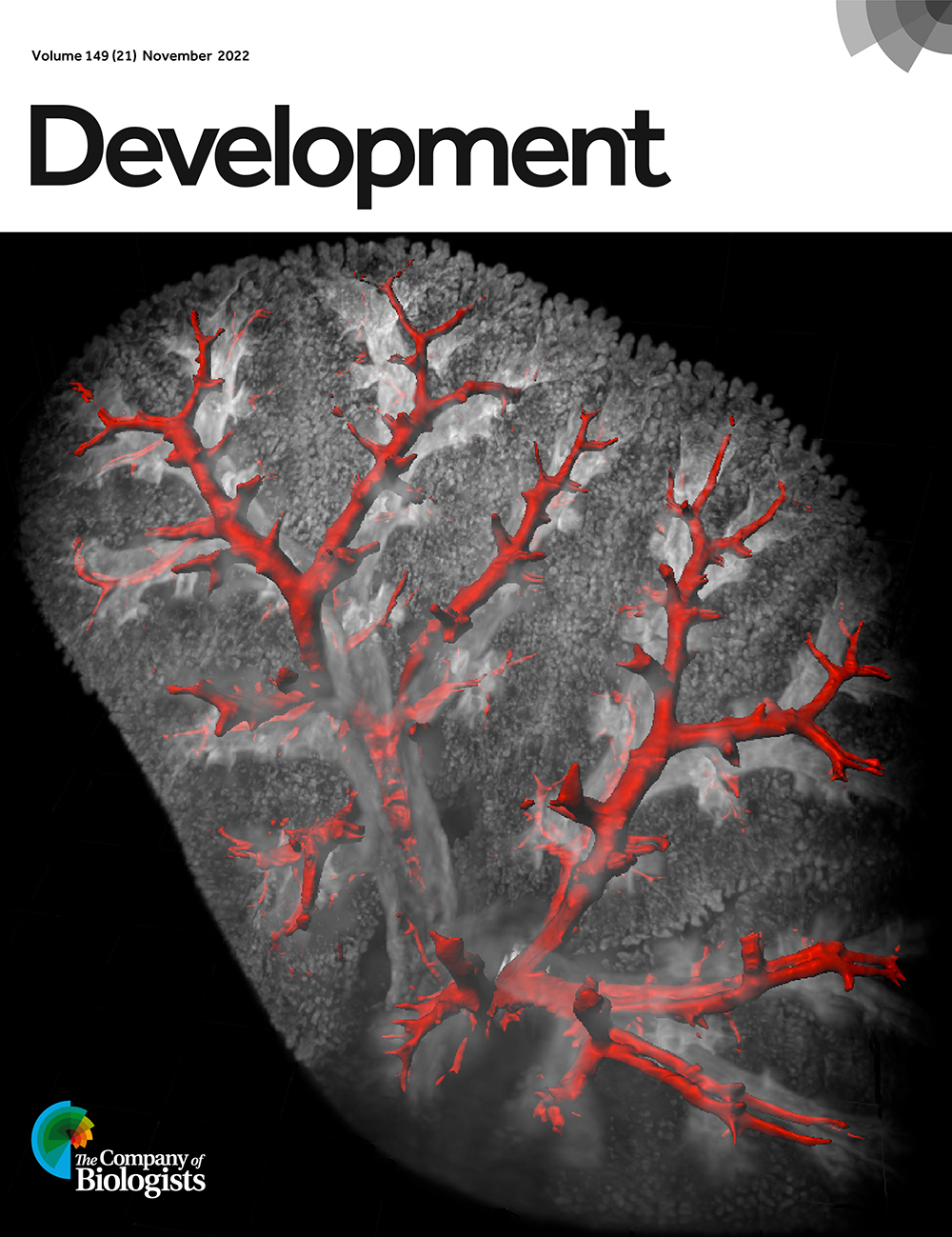HOW CAN WE HELP YOU? Call 1-800-TRY-CHOP
In This Section
Community-Driven Research, CRISPR, RNA Sequencing, Cover of the Year

limjr [at] chop.edu (By Jillian Rose Lim)
Research tools both new and old are at the forefront of this week's news roundup. As the science world marks the 10th anniversary of the gene editing tool CRISPR, researchers at Children's Hospital of Philadelphia ushered in their own novel tool, a computational platform for long-read RNA sequencing. Meanwhile, CHOP and neighboring institutions gathered with community-based organizations at an annual event to foster the best research tool of all: collaboration.
Community-Driven Research Day Brings Organizations Together

Rachel Myers, PhD
CHOP researchers and other academic institutions met with community-based organizations (CBOs) on Jan. 26 for Community-Driven Research Day (CDRD) 2023. Each year, the daylong program unites researchers with community groups to foster collaborations and inspire research questions that serve causes close to the community.
CDRD focuses on the advancement of community health and equity and commits to the basic tenet that both community partners and research partners are involved in all phases of research. This year, CHOP, Drexel, Philadelphia College of Osteopathic Medicine, Temple University, Thomas Jefferson University, and the University of Pennsylvania jointly sponsored the event. Groups met at Drexel University's Gerri C. LeBow College of Business.
As in previous years, CBOs engaged in an interactive poster presentation that highlighted their mission, goals, and the research questions they hope to answer with the support of institutions like CHOP or public sector partners. The agenda also included a panel of past CDRD awardees and community-driven research experts, including Rachel Myers, PhD, a scientist in the Center for Injury Research and Prevention. Dr. Myers and fellow panelists discussed effective community-academic collaborations.
Following the event, the CDRD program will award small grants to encourage community-driven research collaborations through a competitive submission process. These grants have led to exciting partnerships in past years, such as the Center for Violence Prevention's collaboration with Beyond the Bars, an enrichment program for youth in Philadelphia that uses music to interrupt cycles of violence.
Learn more on the Center for Violence Prevention's website and read about another CDRD project on Cornerstone.
CRISPR 10th Anniversary Articles in USA Today Feature Beverly Davidson, PhD

Beverly Davidson, PhD
It's hard to believe a decade has passed since researchers first described CRISPR as a highly efficient and precise tool to edit genes in the journal Science. Since then, CRISPR has become an essential tool in scientists' kits that led to the discovery of the biological basis of diseases, the development of new treatments, and a never-ending host of new ideas and applications that continues to grow. In 2020, for example, researchers in the CHOP genetics lab of Ophir Shalem, PhD, utilized CRISPR to investigate how SARS CoV-2 spreads in the body.
This year, USA Today celebrated CRISPR's 10th anniversary with an article about the tool's future potential, quoting a number of gene therapy experts including Beverly Davidson, PhD, chief scientific strategy officer at CHOP. Dr. Davidson's work at CHOP seeks to better understand the molecular basis of childhood onset neurodegenerative diseases and the development of gene therapies.
"There are many instances that without CRISPR, our life as scientists would be much more difficult," Dr. Davidson stated. In another USA Today article, Dr. Davidson explains CRISPR for the lay public.
Read the more in USA Today.
Novel Tool Allows More Accurate Long-Read RNA Sequencing
Yi Xing, PhD
A new computational tool developed by CHOP researchers circumvents previous limitations when it comes to long-read RNA sequencing technology, ushering in new opportunities for discovery. Scientists have long relied on short-read RNA sequencing platforms, where an RNA molecule is broken up into short pieces due to its length (usually thousands of bases long) in order to be "read." Long-read platforms, where RNA molecules are not broken up and instead sequenced in full, tended to have a higher per-base error rate ranging from 5% and 20% and so were not widely adopted.
The new tool, called ESPRESSO (Error Statistics PRomoted Evaluator of Splice Site Options), could change that, according to its co-developer Yi Xing, PhD, director of the Center for Computational and Genomic Medicine, with its ability to accurately discover and quantify different RNA isoforms using error-prone long-read RNA sequencing data. The program compares all long RNA sequencing reads of a gene to its corresponding genomic DNA before using the error patterns of long reads to identify places where the RNA molecule has been cut and joined.
"Long-read RNA sequencing is a powerful technology that will allow us to uncover RNA variation in rare genetic diseases and other conditions, like cancer," Dr. Xing said. "We are probably at an inflection point in how we discover and analyze RNA molecules. The transition from short-read to long-read RNA sequencing represents an exciting technological transformation, and computational tools that reliably interpret long-read RNA sequencing data are urgently needed."
Dr. Xing and his team described the new tool in Science Advances. Learn more in the CHOP news release.
Study Image Wins Development Cover of the Year Award

*Image Credit Below
The journal cover image that accompanied findings published in Development by researchers in the Penn-CHOP Lung Biology Institute and Vanderbilt University Medical Center won the 2022 Cover of the Year Award. The November 2022 issue of the journal featured the manuscript and cover. A community site, the Node, consisting of developmental and stem cell biologists and run by the journal's publisher, The Company of Biologists, selected the cover as their favorite.
The cover image, provided by David Frank, MD, PhD, co-author and assistant program director of the Pediatric Cardiology T3 Program at CHOP, features a mouse lung lobe in close detail. The study describes the role of CXCL12, a thymidine kinase, in defining lung endothelial heterogeneity and promoting vascular growth.
Image Credit: Prashant Chandrasekaran, Nicholas M. Negretti, Aravind Sivakumar, Derek C. Liberti, Hongbo Wen, Maureen Peers de Nieuwburgh, Joanna Y. Wang, Nigel S. Michki, Fatima N. Chaudhry, Sukhmani Kaur, MinQi Lu, Annabelle Jin, Jarod A. Zepp, Lisa R. Young, Jennifer M. S. Sucre, David B. Frank; CXCL12 defines lung endothelial heterogeneity and promotes distal vascular growth. Development 1 November 2022; 149 (21): dev200909. doi: https://doi.org/10.1242/dev.200909.
ICYMI
Catch up on our headlines from our Jan. 20 In the News:
- Chief of Infectious Diseases Receives Additional NIH Funding for MIS-C Study
- Researchers Investigate How Serotonin Contributes to Heart Valve Disease Progression
- Researchers Identify Genetic Regulator of Sleep
- CHOP Leads Guideline Development for Neonatal Resuscitation Research
Keep up with our news, stories, and updates in real time by following us on Twitter, LinkedIn, or Instagram. Meet the minds behind the science in the Bench to Bedside podcast. Or subscribe to our newsletter to get an email sent every other Friday by signing up here.


